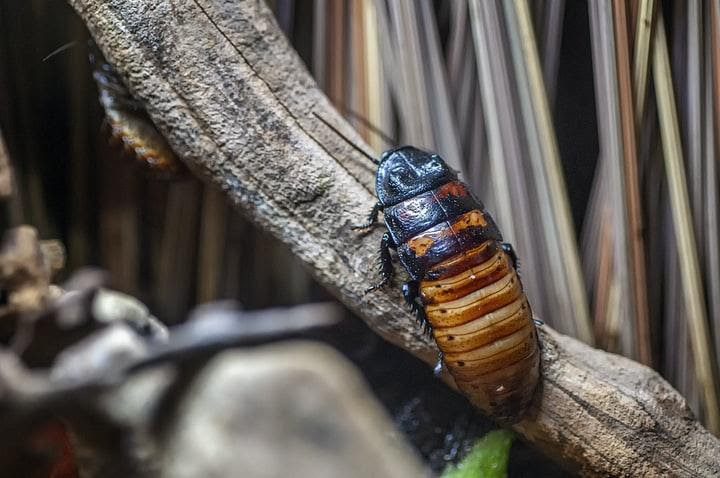Dubia roach is not just an insect feeder for your pets but is a creature that is best suited for pet owner’s homes in terms of cleanliness, maintenance, and sustenance. In comparison to other insects, it scores the highest when it comes to nutrition. These critters are close enough to fulfill most if not all the nutritional requirements of your pet reptile, arachnid, tarantula, arthropod, and amphibian. It is known to be a quiet insect that makes no detectable noise, it is easy to catch because it cannot climb on smooth, vertical surfaces, and is odorless given that it feeds on fruits and vegetables, instead of other insects dropping or its own. Do you already know about these roaches? Then check https://www.topflightdubia.com/ to purchase it. If not, then let’s further explore these benefits to find out the four major reasons this insect might be the right feeder for you:
1. Nutrition
Without a doubt, it is the best nutritional component for your pet’s diet. Insectivorous reptiles get dietary protein between 30% to 50%, therefore on a Dry Matter Basis(DMB), the Dubia roach has a protein of 54% that surpasses the maximum protein intake.
Dehydration among reptiles can be managed by feeding them Dubia roaches gut-loaded with fruits and vegetables that contain 85% and above water. These roaches can consume food two times their body weight, making it the perfect nutrient delivery vehicle.
The structural rigidity added to an arthropod’s hard exoskeleton is Chitin that is fibrous and indigestible. It is known for causing digestive problems in animals if consumed excessively. It is found in Dubia roaches, comprising 3.5% of the insect’s total body weight, which is much less than the amount found in other insect feeders. As feeders, the roaches have the right amount of dry matter that is good without losing out on other nutrients the pets require.
Besides, the roaches have the capacity to store food in their stomach for three days before passing it out. This means your pets can have gut-loads for three days or more with one Dubia roach meal only. When your pet intakes the gut-loaded roach, the specialized bacteria and the digestive processes of the roach change the chemical composition of the food that is beneficial to your pet.
The roaches have low-fat content, have high calcium to phosphorus ratio, have plentiful vitamins and minerals, and have enough flesh in their body to satisfy the hunger of your pet by consuming two to three of these roaches a day.
2. Cleanliness
Dubia roaches rarely carry diseases like black soldier flies, mealworms, super worms, crickets, etc. because half the time it grooms itself. Due to warm and moist conditions combined with the excretion and leftover food items of the insects mentioned previously, diseases are caused. It is known for tolerating low humidity although, in order to survive, it requires temperatures found in the tropics. This indicates that their enclosures stay dry most of the time, preventing bad smells and breeding ground for pests. The roaches follow a plant-based diet, therefore its excretion is odorless and doesn’t attract flies and mites. It is best to take home safety measures just in case. The container in which they are kept is recommended to be cleaned every two weeks. Since they are frugivores, they do not feed on their own species and avoid having meat high in protein. Regardless of what it eats, it should be kept in mind that it emits a musky odor when agitated, although the smell is mild and doesn’t stay for too long.
3. Containment
The roaches are easy to contain because they can’t fly. The wings that male Dubia roaches have aren’t meant for flying. Even if it does fly, it can only fly and jump up to a certain radius within its enclosure, eventually returning back to its place. The female Dubia roaches or nymphs have wings.
If you are thinking of putting a lid to enclose these roaches, then there’s nothing to worry about because they are unable to climb non-textured surfaces like most roaches of its species. Therefore, it is unnecessary to lock the roaches in unless you don’t want your pets to cause trouble and also to maintain a certain level of temperature and humidity.
Moreover, these roaches don’t attack or bite, that is why it is harmless. Its prime objective is to hunt for food. When food is given, it does not touch the skin unless it finishes eating. It is least interested in searching skin for food after being fed properly. It becomes aggressive only when it cannot find food, that too occasionally.
4. Maintenance
If you are thinking of gut-loading your insect with just about anything, then Dubia roaches should come to your mind first because they eat almost everything. Despite this advantage, it is still better to nourish the insect by feeding whole foods which you usually have around, like apples, salads, grains, seeds, nuts, etc. including food containing protein of high quality. As feeders, these roaches are simple and convenient to maintain. However, it should be kept in mind that the Blaptica Dubia roach found in the wild does not have large quantities of protein in its diet if the quality is subpar, given that it is accustomed to living in nutrient-deficient environments. It is able to survive and adapt to such conditions by consuming proteins, but if exceeded would be the cause of its death.
Besides, these roaches have a comparatively longer life expectancy than most insect feeders because it takes months for them to mature and even longer for them to grow to a size that lasts up to two years on average if kept under the right temperature and conditions. Based on varying environmental conditions, a typical pregnancy of a Dubia Roach lasts between 48-64 days. Maintaining habitat of optimal conditions is essential. Females produce their offspring internally, in long, tube-shaped multicellular egg sacs called ootheca. Around 20-35 nymphs can be produced by them at once. Up to 4-6 months is needed for nymphs to mature while undergoing molting periods during the process. Within a few months, a colony of 500 of these insects can grow up to a thousand.
The roaches have to be kept in consistently high levels of humidity and temperature since it is habituated to living under such conditions in the tropics. Their habitat should have a temperature of 30-35 degrees. For breeding, they require temperatures under 20 degrees. So, if you are thinking of keeping them away in your basement, refrigerator, or cabinet where the temperature is cool then you should think twice before doing so unless you live in a tropical climate. The best part is, these tropical roaches are highly unlikely to infest your home by colonizing it.
The concern over which insect feeder would be ideal for your pet is definitely nerve-wracking, but if you do enough research, then you might agree with all the facts stated above. But, of course, at the end of the day, it is up to you depending on what suits your home and pets best. Dubia roaches are unlikely to be the right fit if you live in colder countries or anywhere there is a lack of constant heat and humidity. Worry not, we believe every country has its own type of insect feeder appropriate for pet owners like you. You can still keep these roaches in your home if you choose to buy humidifiers. You may acknowledge this information if you found it useful and/or pass it on to someone you know who is looking for such insect feeders.







